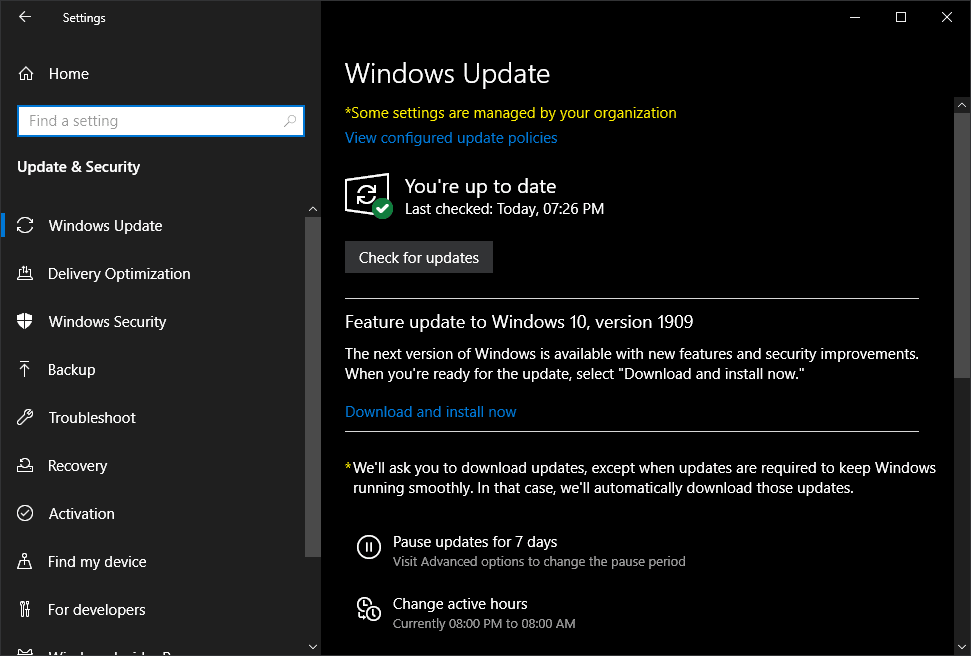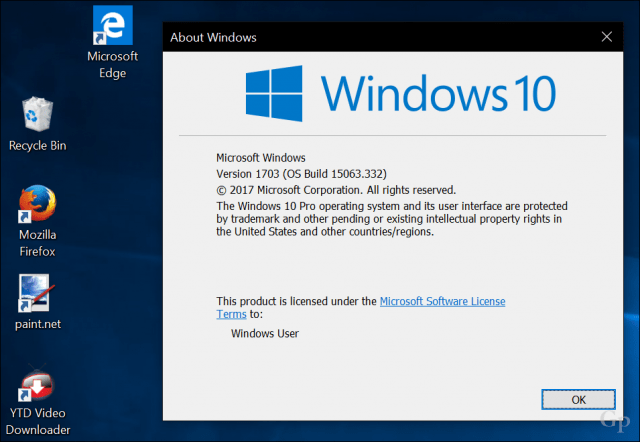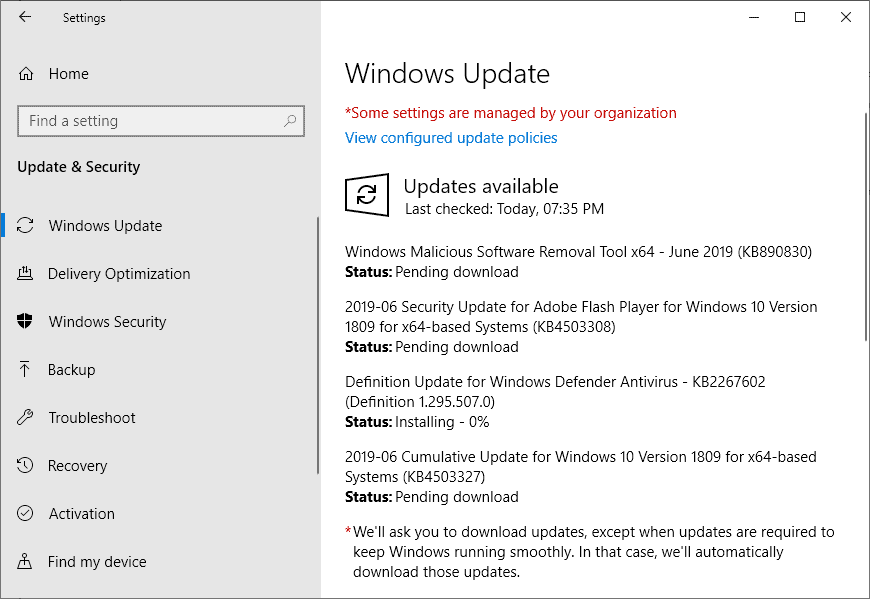- Windows 10 Manual Download Cumulative Update
- Microsoft Windows 10 Manual Download
- Windows 10 Cumulative Update 1903
Microsoft makes available updates for Windows 10 in the regular basis to patch any security hole and to improve the functionality of the operating system. However, even now that updates are mandatory to keep devices always up to date, sometimes updates may not appear for download on your computer for a long time.
Oct 08, 2019 Windows 10 Cumulative Update updates Windows 10 to the latest build offline, so you always have the most recent installation files. This update includes quality improvements. No new operating system features are being introduced in this update. To use this site to find and download updates, you need to change your security settings to allow ActiveX controls and active scripting. To get updates but allow your security settings to continue blocking potentially harmful ActiveX controls and scripting from other sites, make this site a trusted website.
Although Windows Update is the preferred method to get updates, Microsoft also allows users to manually download new patches as they become available through the 'Microsoft Update Catalog' website. While mainly a resource for IT administrators who need to test updates before pushing them to devices in their network, you can use the Update Catalog to quickly download a new update if it's not showing for you in Windows Update as an alternative option.
In this Windows 10 guide, we'll walk you through the steps to find, download, and install updates manually on your device.
How to download cumulative updates
It's important to note that the Microsoft Update Catalog doesn't list anything, instead it's a search page, where you must know exactly the update you want to download.
The easiest way to find an update is knowing its Knowledge Base reference number. For example, on October 11th, Microsoft released Windows 10 build 14393.321, which Knowledge Base reference was KB3194798. You can find the references when we publish a new article about a new update, or when you visit the Windows 10 Update History website. Then do the following:
Visit the Microsoft Update Catalog website.
Quick Tip: If you can't access the site using Microsoft Edge, you can also try opening a new InPrivate window, which should let you get through.
Do a search for the update using the KB number for the update you want. For example, KB3194798.
Click the Download button for the 64-bit or 32-bit version of the update. If you don't know your system type, do the following:
- Open Settings.
- Click on System.
- Click on About.
See System type.
A pop-up window will appear with a direct download link, click it to download the .msu file.
How to install cumulative updates
While you can simply double-click the .msu file to install a new update for Windows 10, you may prefer to include options, such as to prevent the operating system from restarting to finish applying the update, which is something you can do using Command Prompt.
- Use the Windows key + I keyboard shortcut to open the Power User menu and select Command Prompt (admin).
Type the following command and press Enter:
wusa C:PATH-TO-UPDATENAME-OF-UPDATE.msu /quiet /norestartNote: We're adding the /quiet /norestart switches to prevent the operating system from restarting your computer after installing the update, but later on, you must manually reboot your device to finish applying the update.
Quick Tip: If the name of the update turns to be very long, simply begin typing 'Windows10.0-kb' and the hit the Tab key to autocomplete the name.
Wrapping things up

The Microsoft Update Catalog website works best using Internet Explorer, but recent changes that removes ActiveX requirement now allows users to access the site using Chrome and Microsoft Edge. Additionally, alongside cumulative updates, you can also download the latest updates for certain device drivers, and Surface updates.
It's worth pointing out that even though sometimes updates won't get through because of a problem on your computer, there will be other times when an update won't show up because it's not compatible with your system. If you install a patch that is not working correctly, you can always use our guide to uninstall a problematic update.
While we're focusing this guide on Windows 10, the same concept shown here works to download and install updates on previous versions of the operating system, including Windows 8.1 and Windows 7.
More Windows 10 resources
For more help articles, coverage, and answers on Windows 10, you can visit the following resources:
We may earn a commission for purchases using our links. Learn more.
Virtual ProblemsMicrosoft says people don't want Xbox VR — but Jez definitely does
So nobody is buying VR, but is that because they don't want it, or because the experience isn't good enough yet?
Every time Microsoft releases a new cumulative update for Windows 10, it appears on Windows Update servers. For end users, their computers fetch updates automatically from these servers, utilizing valueable internet bandwidth. While Windows Update has some tricks of its own related to Delivery Optimization to share updates across other PCs in a network, it is sometimes convenient to download the offline installer of a big update. If you have more than one computer and would like to save your time and bandwidth, you can download and install the update manually on all of them.

RECOMMENDED: Click here to fix Windows errors and optimize system performance
Also, this can be useful when you need to update a device which is not connected to the Internet directly or all the time. It can be an offline computer, a computer behind a proxy server, or a virtual machine.
Microsoft releases Windows 10 updates regularly to fix bugs and vulnerabilities to improve the stability and functionality of the OS. Microsoft is using several update servers in different regions. Due to this, sometimes updates do not appear for certain countries and languages for long periods of time. In such a situation too, you might want to manually download and install updates.
While Windows Update is the primary service for update redistribution, there is a special web site which hosts update packages. It is called the 'Microsoft Update Catalog'. It is useful to grab update packages manually. After some recent changes made to it by Microsoft, it can be used with any modern browser.
Note: Some update packages might even be exclusively published on Microsoft Update Catalog. Usually, such fixes affect a small select group of users, so the majority of consumers do not need to download and install them.
To manually download and install Windows 10 updates, do the following.
Manually Download and Install Windows 10 Updates
Step 1: Open the Microsoft Update Catalog website with your browser.

Step 2: Perform a search by entering the KB number of the update in the search box. For example, KB4056892.
Step 3: Click on the Download button next to the 32-bit and 64-bit Windows 10 version links. Tip: You can quickly find if you are running a 32-bit or 64-bit Windows version.
Step 4: Download the update using the link that appears on the next page.
The update package file can be either in MSU or CAB format. Most of the time, you will deal with MSU packages.
Windows 10 Manual Download Cumulative Update
To install the downloaded Windows 10 update, please refer to our excellent tutorial:
Microsoft Windows 10 Manual Download
That's it.
Windows 10 Cumulative Update 1903
RECOMMENDED: Click here to fix Windows errors and optimize system performance